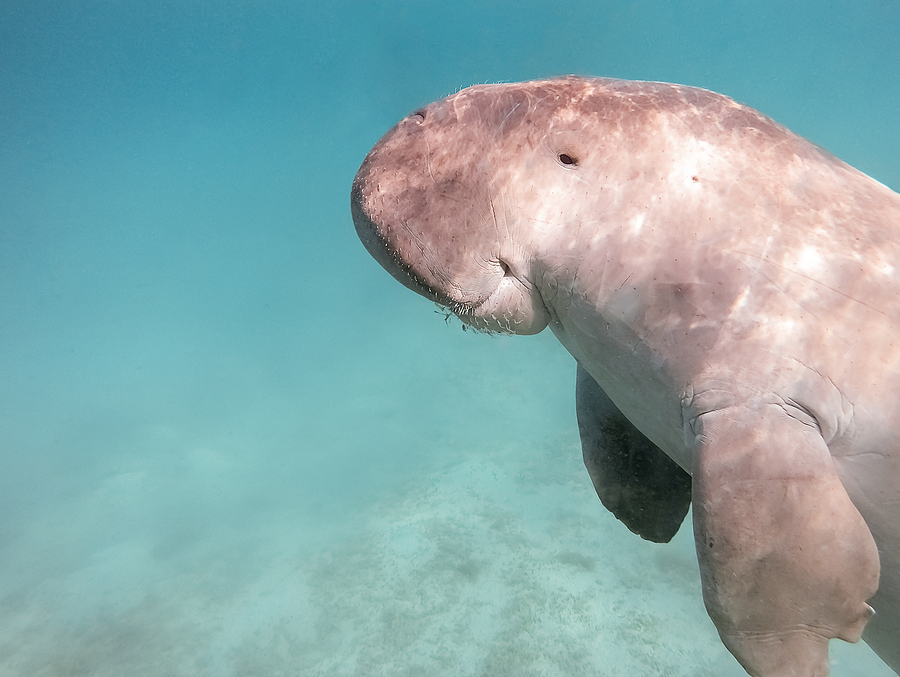Dugong populations are shrinking along a vast stretch of the Great Barrier Reef and it’s been happening for almost 20 years, scientists say.
James Cook University researchers have carried out aerial surveys for the vulnerable species about every five years since the 1980s.
Latest data recorded during flights in November confirm a clear, long-term decline in the population along about 1200km of coastline, from Mission Beach south to Bundaberg.
Annual losses of the grass-grazing cow of the sea have been put at 2.3 per cent a year since 2005 and it’s estimated there are now 2124 dugongs in that entire area, which is roughly half the length of the Great Barrier Reef.
The report is more bad news for the federal government, which is still working to keep the reef off the list of World Heritage sites in danger. The reef’s feeding grounds are listed as one of its World Heritage values.
“We observed a decline in overall dugong numbers, with the area of most concern being the southern section of the Great Barrier Reef from the Whitsundays to Bundaberg,” says Chris Cleguer, lead dugong researcher at the university’s Centre for Tropical Water and Aquatic Ecosystem Research.
“Alarmingly, we observed very few calves in this region and only two mother-calf pairs spotted in the Gladstone area. Our report reinforces the urgency in addressing threats to dugongs.”
The 2022 survey work suggested the strongest population decline was at Hervey Bay, estimated at 5.7 per cent per year since 2005. But Dr Cleguer says that may have been skewed by severe flooding that killed most of the seagrass in the area last year.
“It’s highly likely that some dugongs would have died from starvation, while others would have moved away to habitats near Gladstone in search of food,” he said.
“We found the dugongs that did stay found refuge right in the heart of Hervey Bay, where pockets of deeper seagrass were still holding out.
“The case of Hervey Bay serves as a warning of what may continue to occur under future climate conditions, it underscores the urgency in preserving and understanding seagrass habitats, particularly the deeper water ones.”
It is possible the hit to the Hervey Bay population may be temporary, with dugongs returning to flood-affected areas in the past after a few years.
The Australian Marine Conservation Society has called on governments to fast-track action to limit the threat gillnets pose to dugongs.
Gillnet licences are being phased out on the reef but it will not be free of them until the middle of 2027.
The society’s reef fisheries campaigner Simon Miller says the JCU study shows the highest dugong densities occur in dugong protection areas, yet commercial gillnet fishing is still happening there.
He says there must be an immediate ban on gillnet use in dugong protection areas, while the broader phase-out occurs.
Earlier this year, the society released photos of dugongs, narrow sawfish and green turtles entangled in gillnets or dead on the beach in one such protected area.
Federal Environment Minister Tanya Plibersek says she’s supporting the Queensland government’s phase-out of gillnets, but the timeline is a matter for the state.
AAP has sought comment from the Queensland environment minister.
The federal government has stumped up extra funding so researchers can return to Hervey Bay next year to again look for dugongs.
Tracey Ferrier
(Australian Associated Press)





